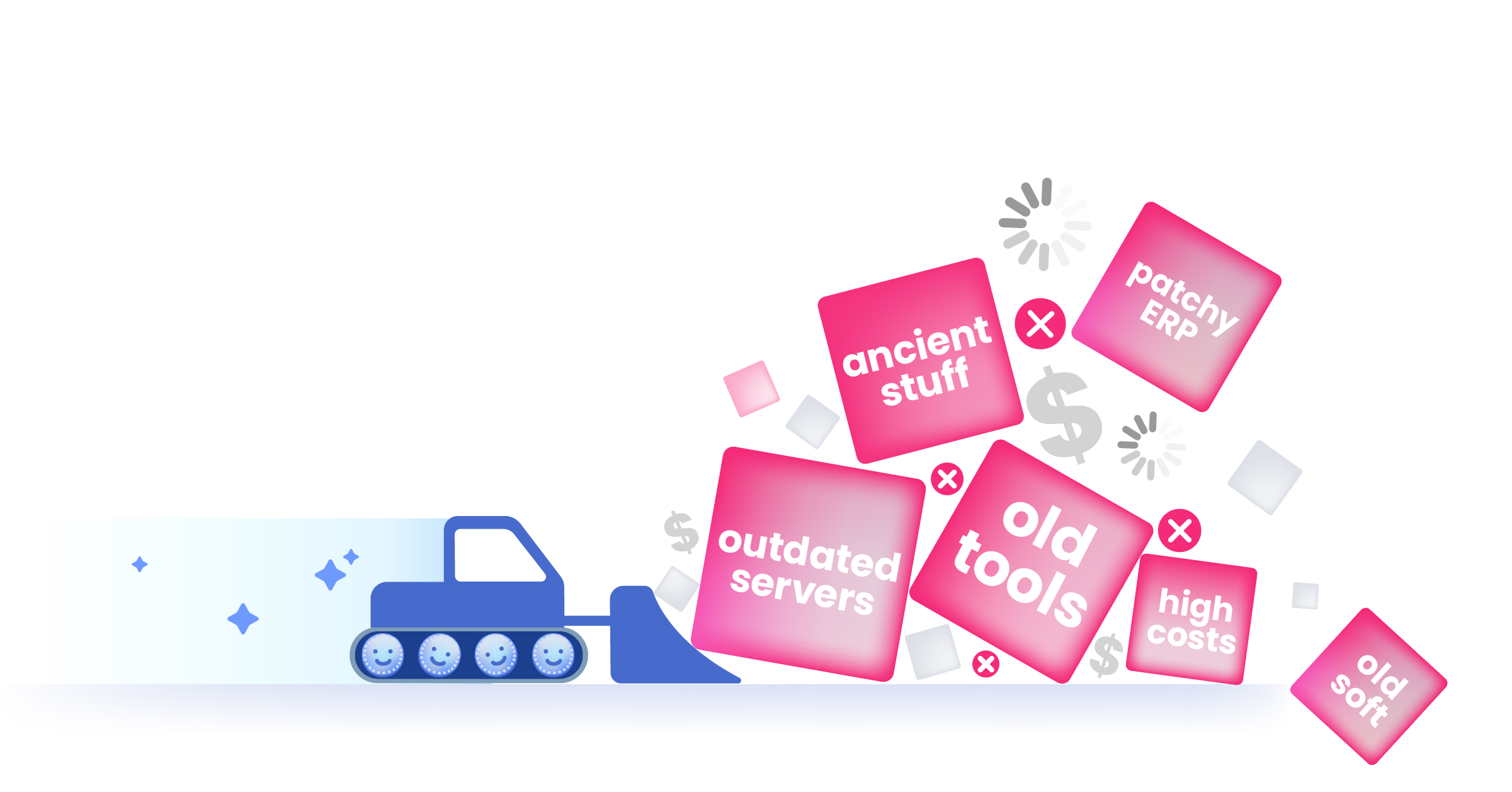
What If You Started from Scratch?
Jul 3, 2025 10:12:47 AM
The Zero-Based Budget That Could Change Everything
Imagine this: you’ve just taken over IT at a mid-sized manufacturing company in the DACH region. It’s a typical KMU—family-owned, 600 employees, stable customer base, and 9 people in IT. Now imagine the unthinkable: no legacy systems, No patchy ERP, no outdated servers, no long list of various management tools, no decade-old maintenance contracts.
You’ve got a clean sheet and a mandate:

How different would your budget look? And what would that tell you about the one you're managing now?
Step 1: Throw Out the Historical Budget (for a Moment)
Traditional budgeting asks: “What did we spend last year? Add 6%?”
Zero-based thinking asks: “If we started from scratch, what would we build, and why?”
Let’s say your current IT budget is around CHF 1.8 million per year—that’s 2.5% of a CHF 60M company revenue, in line with industry averages.
Based on surveys and research, 50–70% of that is likely tied up in “Run”: infrastructure upkeep, license renewals, ERP maintenance, on-prem servers, IT support, patching, IT staff handling a myriad of systems. That’s CHF 1.1 to 1.3 million just to maintain the status quo.

But what if you weren’t forced to fund the past?
Step 2: Build a Modern IT Budget—From Scratch
Here’s a hypothetical “clean-slate” budget for a company of this size, assuming:
- A hybrid-cloud approach (cloud-first, not cloud-only)
- Modular ERP with low-maintenance architecture
- Automated administration, outsourced helpdesk
- A right-sized, multi-skilled IT team focused on innovation

That’s not a wild dream, it may not be that big, but even 350K would go a long way to modernize. It reflects actual cases of SMEs that have phased out legacy ERP systems, automated support, and consolidated software vendors. The saving isn’t just money—it’s people and potential.
Step 3: Reinvest the Difference
Freeing up CHF 700K+ is not about slashing—it’s about reclaiming. You could:
- Fund the first phase of ERP modernization
- Introduce factory-floor analytics or predictive maintenance
- Launch a supplier self-service portal
- Hire two new developers to build customer-facing tools
- Invest in training your IT staff in modern architecture and automation
Suddenly, innovation doesn’t feel “too expensive.” It feels overdue.
Why You Can’t Ignore This
Realistically, you won’t rip and replace everything tomorrow. Regulations, organizational inertia, and long-term contracts make it difficult. But this exercise reveals something uncomfortable.

What is the difference between your legacy setup and a modern one? That’s your Innovation Tax. You’re paying it every year—and getting nothing new in return. And if you look at your peers in the statistics from Avasant - legacy is still a huge spending priority.

Fig: Spending priorities in EMEA from an Avasant survey - Legacy is still consuming a significant amount of money and focus.
A CFO Conversation Worth Having
This isn’t just an IT matter. CFOs love predictability—but they also hate waste. Showing them a clean-slate model, side-by-side with your current run budget, is often a “wait, we’re spending that much just to stand still?” moment.
Even if you can only get 10–15% of the way there in year one, you’ve started shifting the center of gravity—from Run to Build. From firefighting to forward-looking.
💡 Takeaway
Zero-based IT budgeting isn’t a fantasy. It’s a lens to see what your real costs are—and what they could be. If you had the chance to start from scratch, your IT wouldn’t look like it does today.

Submit a comment